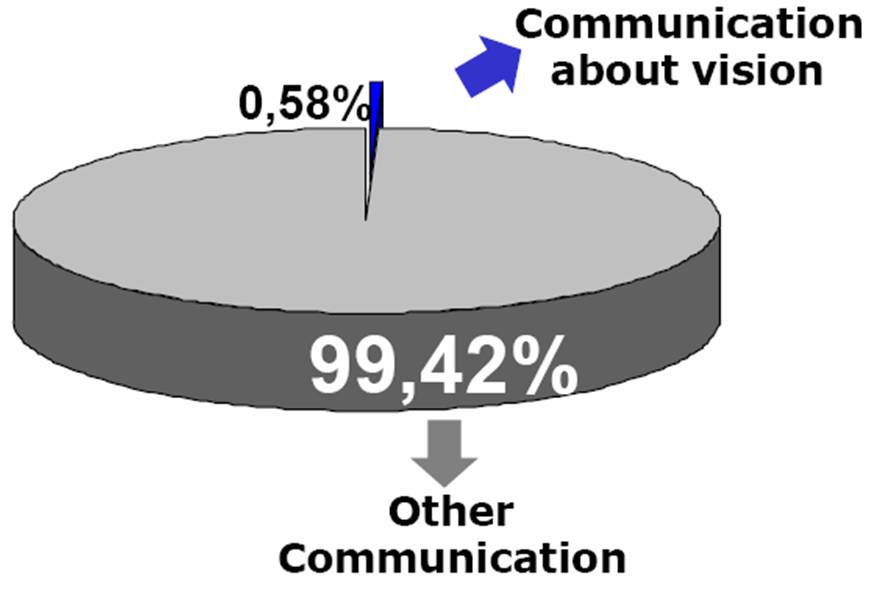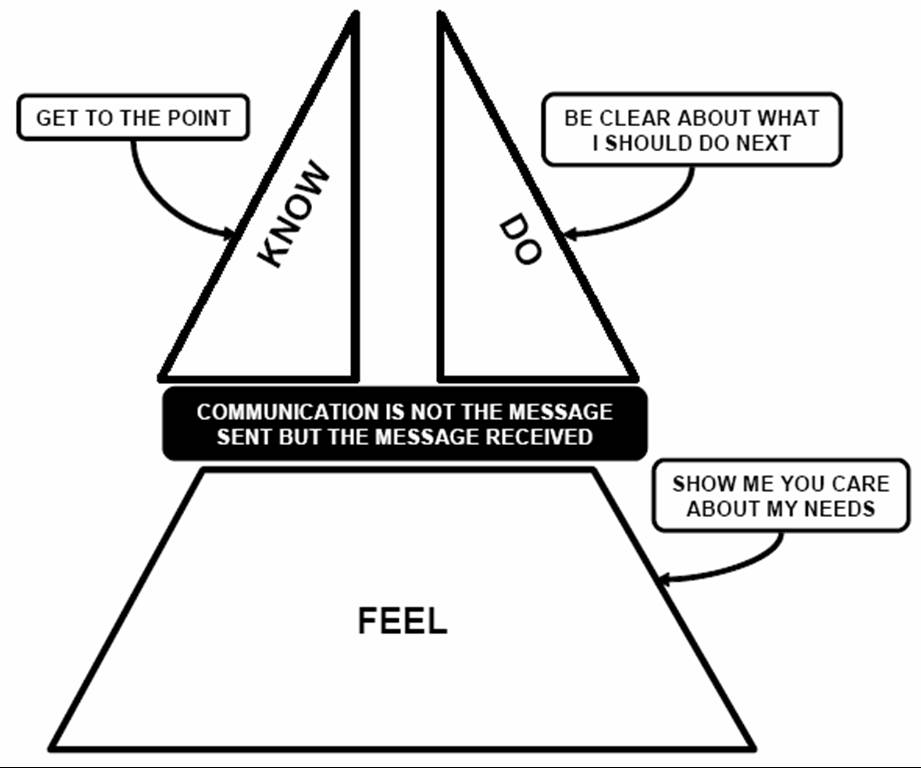In the world-famous book of John Kotter, ‘Leading Change’, we can find a striking calculation regarding communication of strategic large-scale organizational change projects. Kotter uses the example of an important project that should bring about a significant change for a large organization. He then quantifies the amount of communication that is supposed to reach the target audience.

Over a period of 6 months, the total amount of communication that an employee gets ‘communicated upon’ averages 2.300.000 words. Over that same period the communication about that strategic project averages 13.400 words (= a CEO speech of 30 minutes + a division meeting of 60 minutes + an article of 600 words in the company newsletter + a memo of 2000 words by the project manager). The interesting bit is the proportion of that communication compared to the average communication that a person receives over that same time span of six months. On average this is 0,58%!!
Conclusion: 0,58% is the attention slot that you get from an average person – just like an airplane gets a slot for takeoff. So you better make sure that your message is clear and to the point.
In case you would like to know how we can fill this 0,58% slot as effectively and efficiently as possible, you should start with the basic ingredients of organizational change management. As I have stated in another article some time ago, it all comes down to involvement and the only limits to good organizational change are determined by our own creativity, maturity and openness to involve our target audience.
As a reminder, the three ingredients of organizational change are Motivation (the emotional stuff below the surface), Knowledge and Skills. These determine the domains of action for making the change happen.
• Questions and reactions, which fall into the ‘Knowledge’ category, often indicate a need for vision, a business case or an overview. These refer to the ‘what’ of the change.
• The ‘Skills’ category indicates a need for concrete and explicit knowledge, tools and working instructions. In other words: people want to know ‘how’ they will make the change happen.
• In addition there is also an entire range of reactions that fall into the ‘Motivation’ category (the underlying reason that drives the change: the ‘why’). These reactions reflect people’s need for involvement and inspiration. The ingredient ‘Motivation’ determines whether people undergo the change or are part of it.

In the context of communication they translate to the following communication needs:
• Know (relating to the Know-What): People need to know the rationale behind the changes and they need to come to their own conclusions.
• Feel (relating to the Know-Why): People need to actively participate in the process of making decisions and need to create their own buy-in.
• Do (relating to the Know-How): People need the right tools to implement the change
According to Bill Jensen, Know-feel-Do determines the anatomy of behavioral communication. Behavioral communication is communication tailored according to the information needs of the receiver.
The ‘Know-Feel-Do’ model can be used in any communication from email to a telephone conversation or in front of an audience. Know-Feel-Do forces you to see the receiver of your communication as decision makers and to organize your thoughts according to how they listen.
The receiver of a message is mostly waiting for the answer to three questions:
KNOW =>‘What is the one thing you want me to know?’
FEEL => ‘Why is it important?’
DO => ‘What do you want me to do as a result of your communication?’

Next time you have to make a big presentation, an important phone call or an email, of which you want the impact to last longer than a Blackberry-click, consider the ‘Know-Feel-Do’ anatomy. And here’s the trick to remember: if you want to communicate effectively anytime, anywhere, you should make sure that you talk to the head (know), the heart (feel) and the hands (do).




Pingback: Luc’s Thoughts on Organizational Change » Blog Archive » The 6 big concerns of change()
Pingback: HRMblogs.com()
Pingback: Communication “1-N”: The Checklist | Reply-MC()
Pingback: Domino Before You Bingo | Reply-MC()
Pingback: What on Earth are we Communicating for? | Reply-MC()
Pingback: Touchpoints Make The Difference | Reply-MC()